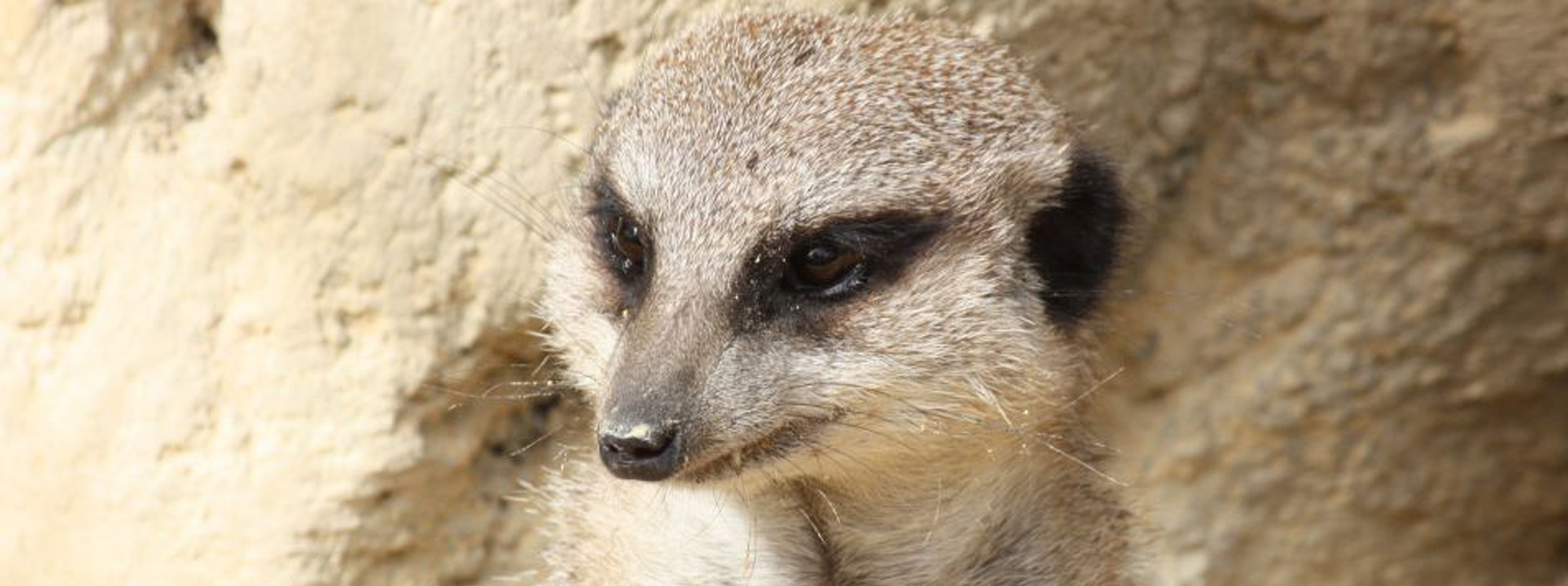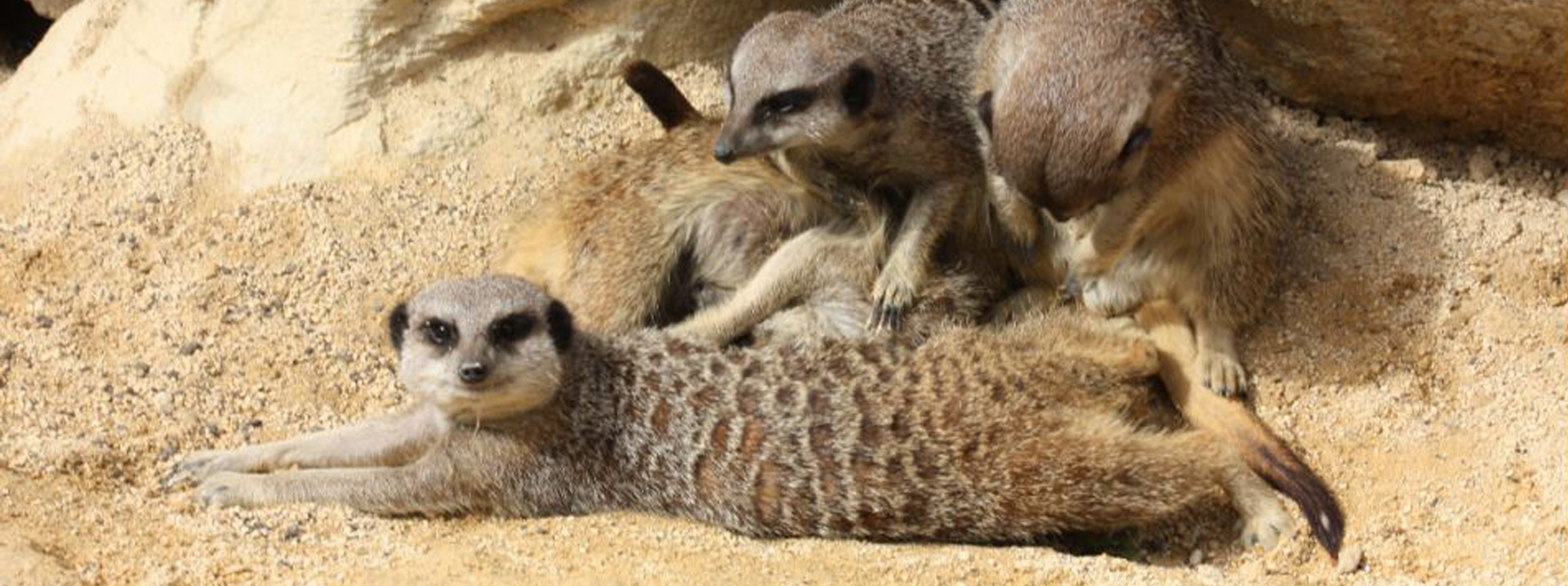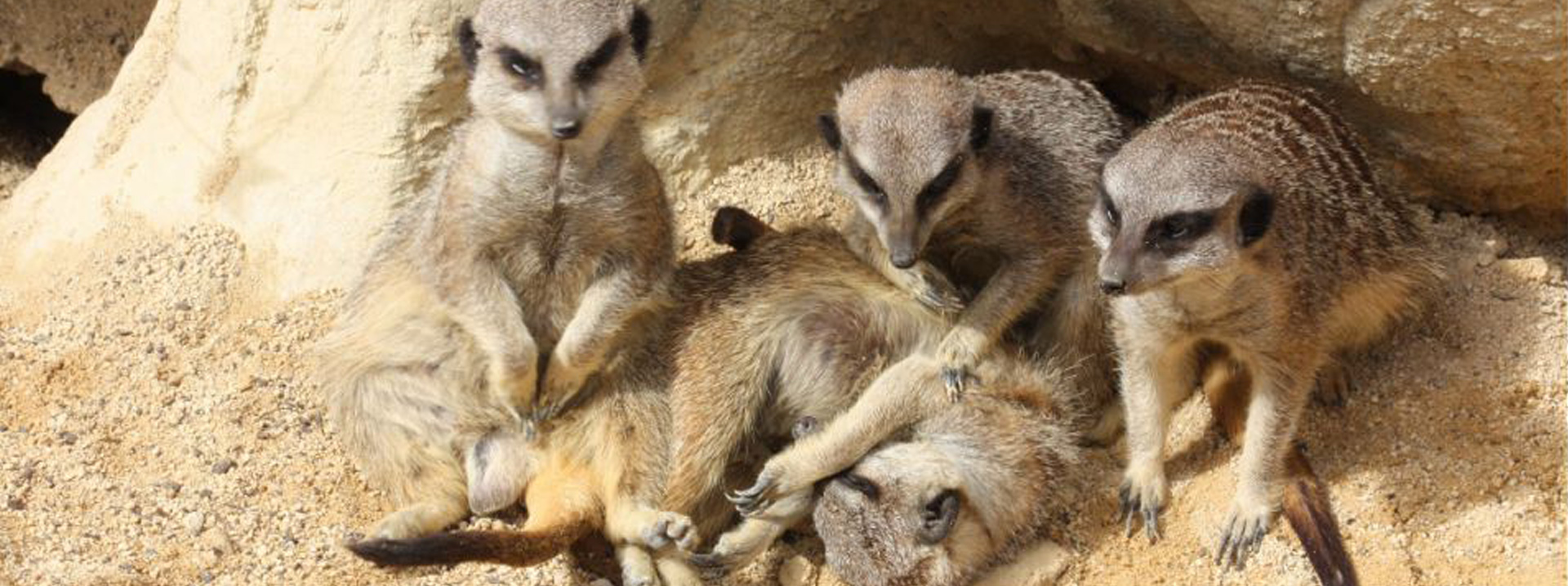



Meerkats
Suricata suricatta
The Meerkat or meercat (Swahili ‘Cat Rock’) (Suricata suricatta), is the name of a small mammal, a member of the mongoose family (Herpestidae) inhabiting the region of the Kalahari Desert and the Namib in Africa .
Species
Mamíferos
Order
Insectívoro - Carnívoro
Family
Herpestidae
Danger of Extinction
Amenazada (vulnerable)

Features
Males have an average weight of 731 g and females 720 g. The body and limbs of these animals are long and slender with a body length and head between 250 and 350 mm. The tail is thin and conical measuring 175-250 mm. Unlike most abundant fur lacks mongooses.
The face is tapered to form a point at the nose and rounded at the back of the head. The ears are small and crescent shaped. Fur color varies geographically. In the southern region of distribution hair color is darker, with a lighter tint in the more arid regions. Usually the color is mottled gray, tan or brown with a silver tint. The nose is brown. The ventral part of the body is covered with hair. The claws of the forelimbs are adapted for digging and the tail is yellow-tan with black tip.
Additionally it has patches of black around the eyes. It has black bands crossing the dorsal region except the head and tail.
Customs, food and habitat:
It is a diurnal species and social customs. They are burrowing animals that live in large underground networks with multiple entrances. Only the left during the day. The colony size can reach 40 individuals.
The meerkat is mainly insectivorous but also eats small invertebrates, eggs and vegetable components. These forage regularly for digging these elements in soil, grass and under rocks. Their diet consists of 82% of insects, arachnids 7%, 3% centipedes, millipedes 3%, 2% and 2% of reptiles birds.
Meerkats inhabit the southern tip of Africa specifically western and southern Namibia, southwestern and northern Botswana and western South Africa; There is a small intrusion in the southwest corner of Angola. Also in low-lying areas in Lesotho.
They inhabit the more arid and open than any other species of mongoose areas. They are found in areas of savannah and open plains and its distribution depends on the type of soil, preferably firm and hard to settle soil.
Curiosities
The species shows various strategies against predators. These behaviors include alarm calls, maintaining alertness to place the body in an upright position, seeking refuge, defensive warnings, mobbing a predator, self defense and youth protection.
During the defensive threats and harassment meerkats appear to be larger than they really are. An individual may arch her back, pretending to be as high as possible on all fours with the hair and tail erect and head down. At the same time moves forward and backward, growls, hisses and spits in an attempt to intimidate enemies. Harassment requires a group of meerkats exhibit this defensive behavior simultaneously. If a predator approaches despite these warnings, the meerkat lands on his back with claws or teeth thus protecting the back of neck. For aerial predators meerkats remain more often burrow if imminent attack. It is surprising, however, that adults can protect their young with their own bodies.

